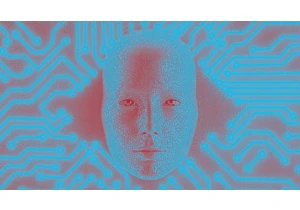Blockchain may be swimming into the mainstream with the force of a torpedo, but there are dams standing in the way. Among the biggest: its impact on the climate. Take a look at cryptocurrency mining, one of the most widely used consensus mechanisms for determining how blockchain ledgers are written. It’s a greenhouse gas giant that won’t stop growing. Calls to regulate the burgeoning industry are getting louder, and even Congress is listening. It held its first convenings on the topic last month, and on Thursday, a hearing at the House Committee on Energy and Commerce titled “Cleaning Up Cryptocurrency” hauled in mining and data executives, a utilities expert, a technology professor, and a former Treasury officer to prod the environmental issue from all sides. At the heart of the matter are two questions: Why does crypto eat so much carbon, and how can we lower its appetite? Here, some context. The problem Much conversation swirls around “proof of work,” which refers to the consensus mechanism for many blockchains, including those on top crypto tokens Bitcoin and Ethereum. Proof of work functions when cryptocurrency miners—or anybody with a supercomputer—race to solve complex math puzzles that require vast reserves of processing power. It’s called hashing, and the puzzles they’re solving code the next “block” of the blockchain—that is, a set of verified transactions that will be inscribed into the digital ledger. That’s very valuable information, as the ledger controls how much crypto-coin goes into each holder’s digital wallet. But the crux of decentralized finance is that there isn’t one almighty power overseeing these transactions, like a corporate clearinghouse. Rather, that power rests in the hands of the public, which collectively maintains the blockchain ledger via open-source software. The integrity of this system relies on a mass consensus of 51% or more of the network—the more people hashing, the better. The incentive, meanwhile, is financial—the first to produce a correct, consensus-backed block is rewarded with a hefty payout in crypto; earlier this month, the prize for winning Bitcoin miners equated to roughly $270,000, doled out every 10 minutes. With so much cash on the line, crypto is reeling in miners—which also means more supercomputers are burning the midnight coal. One estimate puts the total carbon emissions from Bitcoin and Ethereum mining in 2021 at 78.8 million tons, the equivalent of tailpipe fumes from 15.5 million cars on the road. There’s also the problem of electronic waste: As the race demands faster and more powerful tools, miners are upgrading and trashing their old equipment, generating an estimated 30,700 tons per year of digital junk. The possible solutions Proof of stake: Another consensus mechanism, called “proof of stake,” authenticates the blockchain with a much smaller energy footprint. Used by Bitcoin rivals like Cardano, Solana, and the nascent Ethereum 2.0, it, too, involves a network of people vying to mint the next block of transactions. Called validators, they compete by “staking” their own crypto in exchange for the rights; selection of winners is algorithmic and pseudo-random, but has to do with who put up the most coin for the longest period of time. Other validators then check the winners’ blocks—if they match the consensus of 51% of the network, they get the payouts; if they don’t, their stakes are slashed as punishment. Without the abstruse puzzle-solving, it’s quicker and less energy-draining than proof of work. However, that doesn’t mean it’s the obvious answer. Contrary to the spirit of DeFi, it tends toward centralization in that, theoretically, one entity—or person—flush with cryptocurrency could single-handedly shape the blockchain. Supporters of proof of work, on the other hand, claim it is the only battle-tested mechanism of blockchain verification; in Bitcoin alone, it has secured more than $1 trillion in assets. Ironically, its energy-guzzling nature is key: The incredible computing power needed keeps rogues from monopolizing the hash network and verifying invalid blocks. Greener energy: Proof of work’s insane energy demand could actually be perversely beneficial, executives of crypto mining-related companies argued in Congress, because it would urge the cultivating of sustainable resources like solar, hydro, and wind power. One said mining could offer a base consumption for renewable power generators that would otherwise be unable to sell at production capacity, citing that in California in 2020, solar panel production exceeded demand by enough to power 1 million watts for 171 years. Mining could also harness energy byproducts that are currently wasted, like gas flares from oil drilling, which some rigs are already exploring. And mining activity in the United States has already clustered in regions with low-cost renewables such as Texas, where wind turbines are plentiful, and Washington with ample hydropower. Of course, the issue runs much deeper and muddier than this. And naturally, Thursday’s congressional hearing barely scratched the surface and made no waves. But even so, it’s a good sign that crypto is heading down the path toward needed regulation and reforms.
Chcete-li přidat komentář, přihlaste se
Ostatní příspěvky v této skupině


Anthropic released on Monday its Claude 3.7 Sonnet model, which it says returns results faster and can show the user the “chain of thought” it follows to reach an answer. This latest model also po

This morning, Apple announced its largest spend commitment to da


In 2024, Amazon introduced its AI-powered HR ass

Lore isn’t just for games like The Elder Scrolls or films like The Lord of the Rings—online, it has evolved into something entirely new.
The Old English word made the s

Ben Sweeny, the salesman-turned-comedian behind that online persona Corporate Sween, says that bosses should waterboard their employees.
“Some companies drown their employees with
